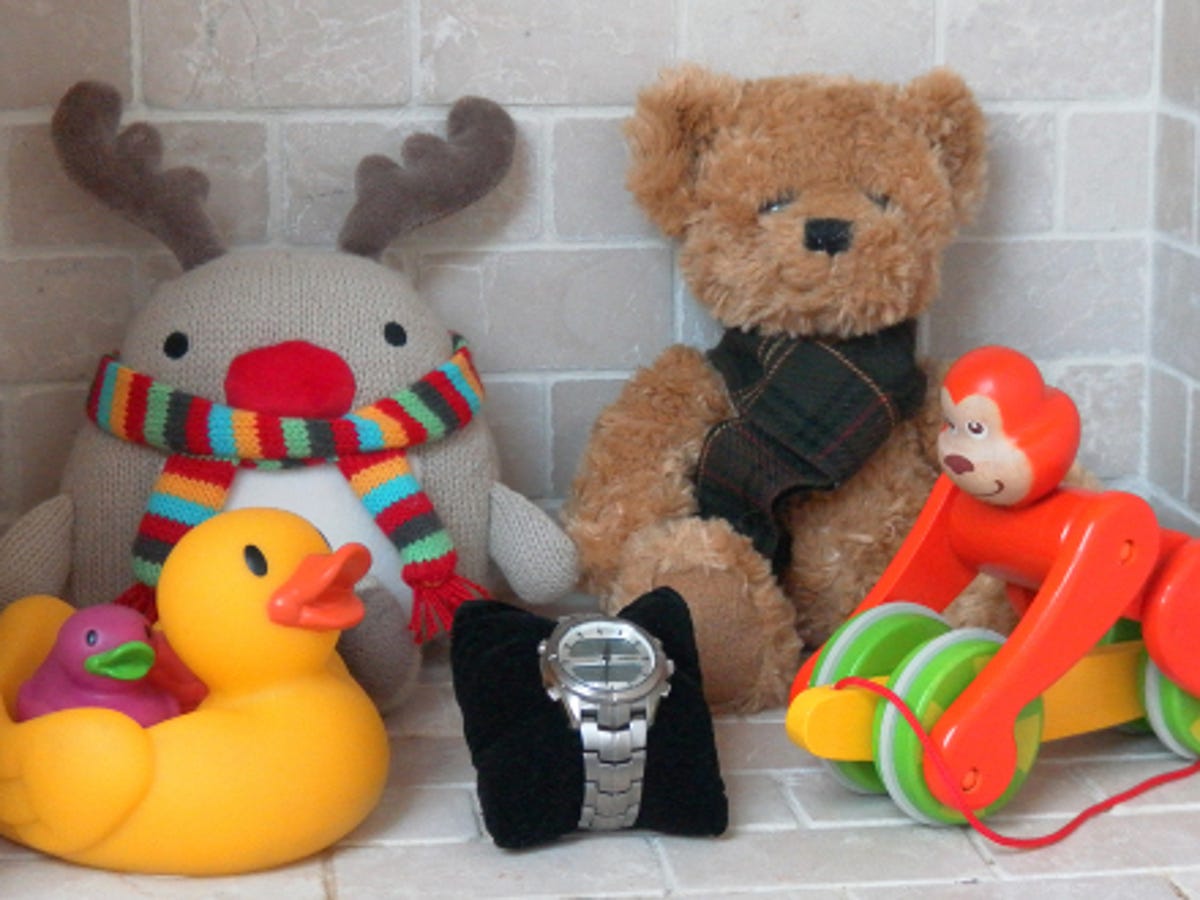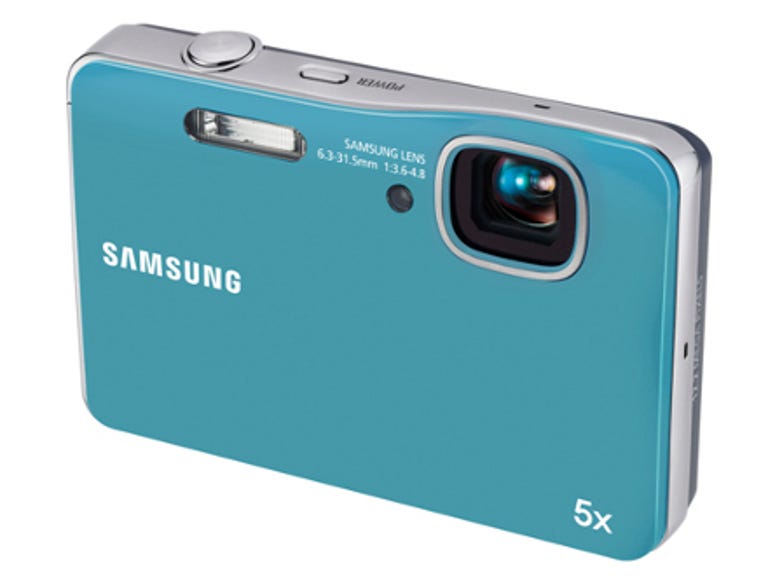 Why You Can Trust CNET
Why You Can Trust CNET Samsung WP10 review: Samsung WP10
The waterproof and dust-proof Samsung WP10 is an affordable and easy-to-use compact camera that will let you take snaps in inclement weather or when splashing about in the pool. Its pictures are rather hit and miss, though.
You can catch your death by mixing water and electronics, as many a henchman has found out. But, for those plucky souls who want to keep taking pictures in damp conditions, help is at hand. Samsung has launched the waterproof and dust-proof WP10, a 12.2-megapixel compact camera with a 5x optical zoom and the ability to record 720p high-definition movies. At around £125, it doesn't cost much more than an unprotected compact snapper either.
The Good
The Bad
The Bottom Line
Slanted and enchanted
Samsung claims the WP10 can survive being submerged in up to 3m of water, and withstand bullies kicking dust into its lens. But, unlike most rugged cameras, including the Fujifilm FinePix XP10, Panasonic Lumix DMC-FT10 and Olympus mju Tough-8000, it isn't freeze-proof or shock-proof. That's a pity, as the knock-on effect of its smooth exterior is that fingers slip and slide across its surface, whether conditions are dry or wet, so you might drop it.
But, then again, Samsung has clearly put some thought into the camera's usability in other ways. For example, the lens is positioned so that it points upwards slightly (seven degrees more than usual). Samsung claims this promotes a more natural posture when taking photographs. Also, the shutter-release button is slanted in the other direction, which apparently both allows you to grip the camera more tightly, and reduces the possibility of your hands shaking and causing image blur.

Otherwise, image stabilisation comes in the form of software-based digital anti-shake, which boosts the shutter speed and ISO as appropriate. This type of image stabilisation is often seen on relatively cheap cameras. We'd have preferred mechanical-sensor-shift or optical-lens-based anti-shake, but the WP10 has clearly been made to hit a certain price point.
Given that fact, it's surprising that the camera offers an HDMI output for hooking it up directly to a flat-panel high-definition TV. This is a feature usually found on slightly more expensive models. The HDMI port is hidden under a thick flap on the camera's side. It comes at the expense of standard AV and USB connectivity, though, which is odd. Users will therefore need a separate card reader to download photos and video to their PC.
The mainly metal WP10 feels solid enough to fend off an angry crab. Nevertheless, it still only weighs 121g, without a battery and SD or SDHC memory card inserted in the base.
Underwater japes
With a press of the power button, the WP10 readies itself for action in just over a second. With a half press of the springy shutter-release button, focus and exposure are determined in just over a second, with the lens audibly creaking as it adjusts. Take a picture in single-shot mode and there's a 2 to 3 second wait while a JPEG is committed to memory, with the camera freezing while this is happening.
The 2.7-inch, 230,000-pixel LCD display is 'intelligent' in that it reads ambient lighting and makes brightness adjustments automatically. That means you won't need to fiddle with brightness settings whether you're underwater or on dry land. The screen's brightness can sometimes make images appear over-exposed, however.
The WP10's buttons are no larger than those of a standard compact camera, which isn't necessarily what you want when you're trying to alter settings underwater. It's a good job, then, that Samsung has included its reasonably reliable 'smart auto' mode as the default setting, so you can just point and shoot.
To shoot video, you have to press the mode button and select the relevant mode. There's no shooting-mode dial or one-touch record button, which would make filming more convenient. On the plus side, you can use the 5x optical zoom when recording video, and also take advantage of about a dozen scene modes. These include an aquatic mode.
Although the WP10's feature set has been pretty much pared back to the essentials, there are some fun shooting options. You can try out an old-fashioned, pinhole-camera-style digital filter effect or a fisheye one, for example. 'Retro', 'vivid', 'calm' and 'classic' effects provide a further limited degree of creative control.
Sundry gripes
On a couple of occasions, our WP10 froze entirely. Once, after shooting a video clip, we got a processing message that wouldn't disappear. Another time, we dunked the WP10 in our local pond and fired off a couple of shots with the lens partially poking above the surface of the water, only to see the same message appear. Drying the camera and removing and replacing the battery fixed the problem, but this isn't something you'd want to happen when you're swimming in the ocean.
Another problem with the camera is that the rocker switch for the optical zoom is quite stiff. We had to press it firmly to get it to kick in and respond.
Yet another issue is that, out of the water and on a cloudy day, the WP10's slippery exterior means that camera shake and, consequently, soft images are pretty much unavoidable. We didn't find this a problem in brighter, sunnier conditions -- but then lens flare occasionally became an issue. All in all, we found the WP10's images to be hit and miss.
Verdict
The Samsung WP10 is easy to use, but it's not without its quirks and its image quality is variable. It may be one of the cheaper waterproof options but, due to the reliability issues we had with our test sample, we can't realistically recommend it as a means of documenting your own underwater expedition. It's more a camera for inclement days and splashing about by the pool.
Edited by Charles Kloet
